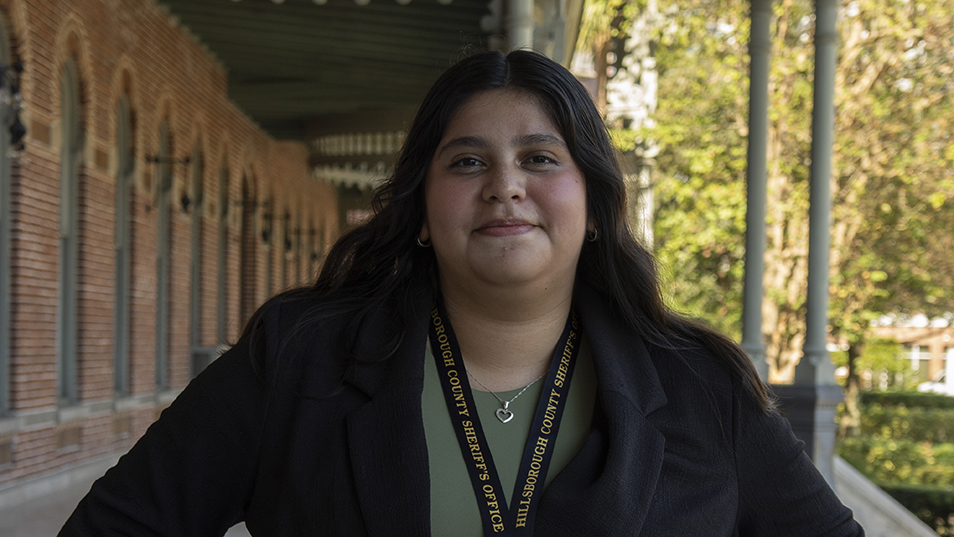Contact us
401 W. Kennedy Blvd.
Tampa, FL 33606-13490
(813) 253-3333
After serving as a victim advocate in the Office of the State Attorney, Emily Ramos ’25 now has the opportunity to see how victim advocates operate within law enforcement.

After serving as a victim advocate in the Office of the State Attorney, Emily Ramos ’25 now has the opportunity to see how victim advocates operate within law enforcement. Photo by Gabrielle Huffman
After serving as a victim advocate in the Hillsborough County State Attorney's Office, Emily Ramos ’25 now has the opportunity to see how victim advocates operate within law enforcement.
Since August, Ramos, a criminology and criminal justice major, has worked with the Hillsborough County Sheriff’s Office and the behavioral resource unit as a victim specialist intern. She worked in the State Attorney’s Office in a similar role from September to December of last year.
Ramos always knew she wanted to go into victim advocacy.
“It’s part of the criminal justice system that isn't really talked about a lot — how victims deal with the aftermath when a crime happens. It's something I'm really passionate about, and I really want to work with them more,” she said.
Ramos is getting real-life experience as an intern. Every time a 911 call is made and there is a victim involved, for example, for a domestic violence call, a homicide or suicide, the 911 responder or officer will convey if a victim advocate is needed at the scene.
Ramos, then, gets called to talk to the family involved and provide resources.
A large part of victim advocacy is ensuring up-to-date resources for victims to access. Then, advocates follow up to see if victims need anything. Advocates continue to check in until the State Attorney’s Office takes over.
“Every call is different,” Ramos said.
For domestic violence calls, law enforcement works with the Spring of Tampa Bay or another domestic violence shelter in town. They first see if there is a bed available. However, sometimes the victim does not want that, or they need something else, Ramos said.
The difference between the law enforcement side of victim advocacy and the State Attorney’s Office, Ramos learned, is the amount of contact with the families.
“You know, court is not quick. It's like two or three years. So you really get to know the family over time,” she said of working with the State Attorney’s Office.
Ramos has learned that she prefers the prolonged contact with families, as building and maintaining the relationship is important to her.
However, she likes responding to scenes and having an immediate impact with families, too.
“Getting to talk to the victim one-on-one, it’s just really different when something has just happened, compared to, like, two years later,” Ramos said.
The long wait for justice is partly why victim advocates exist, Ramos said, and this is also something many people don’t realize, especially if TV dramas inform their knowledge of the profession.
“In reality, victims aren't really getting justice right away. It's a very prolonged process, and it could be really degrading for somebody,” Ramos said. “So TV shows don't really cover that healing process or that journey.”
More UT News